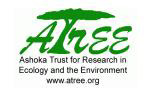Ecology and Environment
National Environment Protection Authority (NEPA) - request for comments
Posted on 05 Oct, 2009 08:35 PMImage & Content Courtesy: Ministry Of Environment & Forests (MoEF) Government Of India

The challenge of environmental management and regulation is immense in a country as large and diverse as India. Over the years, legislation has evolved. With the enactment of the Environment (Protection) Act 1986, the various rules and notifications, and the National Environment Policy 2006, a credible legislative and policy base has been created. But there are gaps in the institutional mechanisms and implementation has not kept pace with the legislative and policy evolution.
To over come this problem Ministry Of Environment & Forests (MoEF) Government Of India, has put forward few plans to set up a National Environment Protection Authority (NEPA), which will be responsible for the creation of new policies, implementation of regulations and dispensation of justice in the environmental domain in India.
Ministry Of Environment & Forests (MoEF) Government Of India, has invited comments from the States, civil society, and other stakeholders regarding the design of an appropriate institutional structure for best addressing the growing environmental challenges.
State of the environment report - Tikamgarh district - Madhya Pradesh (2009)
Posted on 03 Oct, 2009 10:25 PMThis report on the state of the environment in Tikamgarh district, prepared by Development Alternatives, provides a summary of the environmental attributes and condition of the district and the human impacts on the environment. It also provides a public record of district authority, industry and community activities and achievements in responding to pressures on the environment. The purpose of this report is to bring out an overview of the environmental scenario of the district to serve as a baseline document and assist in logical and information based decision making.
Water resources in Jhansi and Tikamgarh districts (Madhya Pradesh) - A status report (2007)
Posted on 03 Oct, 2009 05:56 PMThis status report prepared by Development Alternatives contains brief background information about the Bundelkhand region, details about the physical profle (topography, drainage and river systems, land usage, climate, rainfall), water resources information (water demand, availability, supply and accessibility) and information on sanitation practices (toilets, personal hygiene, solid waste management, liquid waste disposal, availability of water for sanitation).
Sensitising children on water quality : An Interactive fun way to learn the extent to which our rivers are polluted
Posted on 04 Sep, 2009 11:12 AMSensitizing children about environmental issues and green habits is important as they can reduce or prevent various types of environmental pollution in daily life. Edugreen, an initiative of TERI, makes this learning fun and interactive for the children.
How to do a fish count in your local water body-Vembanad Fish Count program
Posted on 04 Sep, 2009 10:20 AMDo a fish count in your local water body and understand the different rhythms of ecological life in your neighbourhood.
Dr Latha Bhaskar and ATREE attempted to do exactly that in their Vembanad Fish Count Program. Download the report, their methodology and tools here.
ATREE: Faculty in Environment & Development Required
Posted on 03 Sep, 2009 05:06 PMImage & Content Courtesy: ATREE 
ATREE invites applications for faculty positions in the broad theme of Environment and Development, specifically in areas of Land and Water Resources, Forests and Livelihoods, Energy and Climate Change.
Qualifications: Candidates must be dynamic and highly motivated scholars, Ph.D. with one or more years of post-doctoral experience, with a strong track record of academically rigorous but socially relevant research in the areas indicated above. They could be trained in any branch of the social sciences or of the natural/ physical/ engineering sciences, or both. Applicants must have a strong interest in applied research, working in multi-disciplinary teams, and teaching on environmental issues.
Interested and qualified candidates should submit detailed curriculum vitae, list of publications, copies of key publications, names and contact information of three references, and an outline of proposed future research. Please use 'Faculty position in E&D' in the subject head of your e-mail. There is no separate application form. The deadline for receiving applications is September 15, 2009.
The Subsidiary Body for Scientific and Technological Advice: A subsidiary body to the UNFCCC
Posted on 29 Aug, 2009 10:37 AMSome of the issues the SBSTA is currently dealing with are land use, land-use change and forestry, adaptation, mitigation, research, systematic observation and bunker fuels.
United Nations Framework Convention on Climate Change COP-1: The Berlin Mandate
Posted on 28 Aug, 2009 05:53 PMThe goal for COP1 was therefore set at adoption of legally binding obligations to reduce greenhouse gas emissions. It was expected that 15 years down the line, the larger, newly industrializing countries would together be among the largest emitters of greenhouse gas emissions.
Films & video resources relating to the Kyoto Protocol
Posted on 28 Aug, 2009 05:36 PMAfter Kyoto
27 Minutes: English





